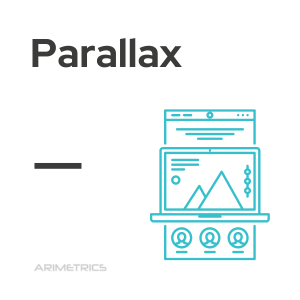Definition
Parallax on a website is a visual design technique in which the movement of different layers of a web page is used to create a 3D illusion and give depth and dynamism to the interface. This technique is based on the difference in speed and direction between the layers that make up a web page, which produces a scrolling effect that captures the user’s attention and creates a more attractive and interactive browsing experience.
Advantages of Parallax
Parallax has become a popular trend in web design due to its numerous benefits, including:
- Improves user retention on the web: The illusion of depth and movement offered by parallax captures users’ attention and invites them to explore beyond the homepage, thus increasing the time spent on the web.
- Facilitates the communication of information: The parallax allows to present information in a structured and effective way, since the different layers can be used to divide and summarize the content of the page.
- Improves the user experience: The parallax allows you to give life to the page and create an emotional connection with the user, generating a more pleasant and memorable interaction.
- Facilitates mobile browsing: Since parallax is a responsive design technique, it facilitates the adaptation of the web to different devices, especially mobile.
How to implement Parallax on a website
- First, define the objectives of the page and whether parallax is the right technique to achieve them. If you are looking to create an engaging and memorable user experience, parallax can be a good option. However, if you are looking for fast and efficient navigation, it may not be the best option.
- Then, choose the layers to be used on the page and determine their speed and direction of movement. The layers must be different from each other to create an effect of depth and dynamism that attracts the user’s attention.
- It is important to take care of the loading speed of the page. Parallax can be a heavy technique that affects page speed and user experience. Therefore, it is recommended to optimize the size of the images and files used to reduce the loading time.
- Parallax should be used sparingly. If all pages of the website use this technique, the user may lose interest and their experience might be less appealing. Therefore, it is necessary to define which sections or pages can benefit from parallax most effectively.
- Finally, it is important to test the design of the page using the parallax on different devices and browsers. The design must be responsive and ensure that both on large screens and on mobile devices the parallax does not affect the user’s navigation.
Parallax can be an effective and attractive technique to improve the user experience on a web page, as long as it is properly implemented and integrated into a coherent and solid design strategy.
